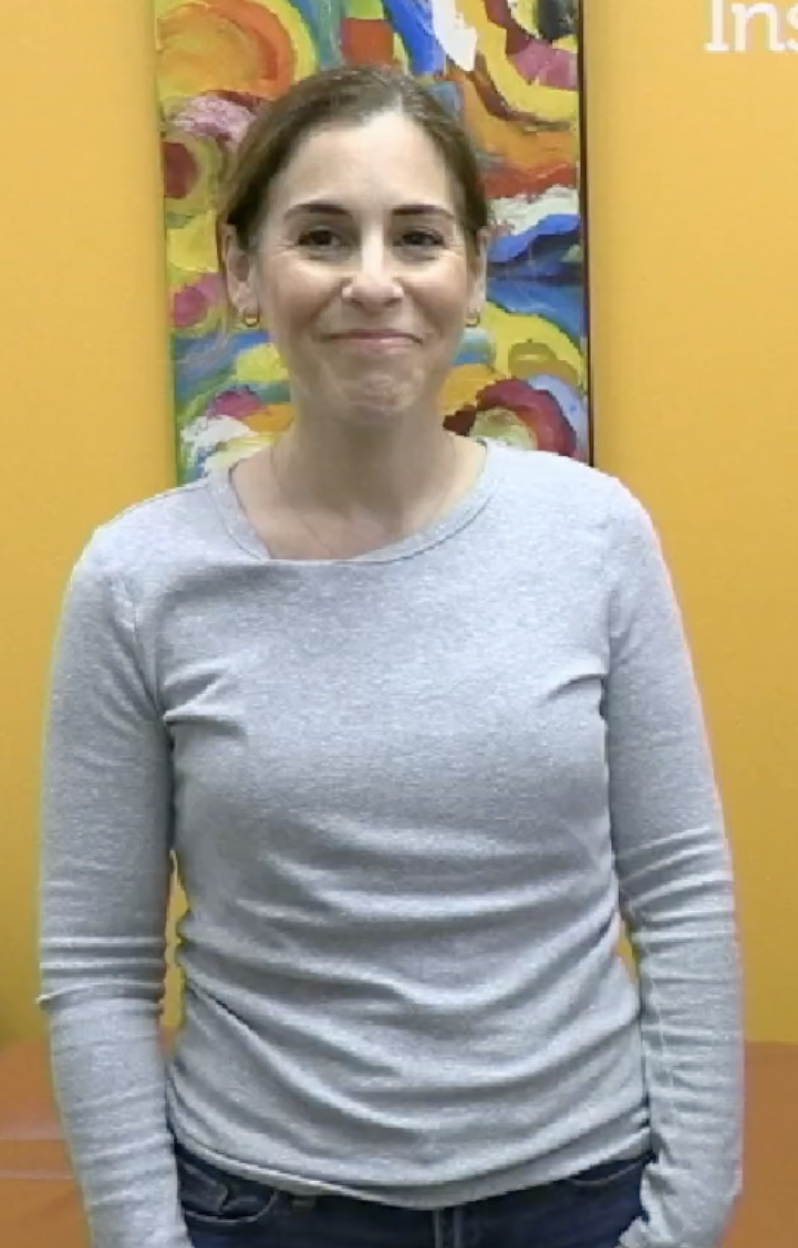Could Your Neck Pain or Migraines Be Related to Your C-Section?
Migraines and Tight Muscles, Oh My!
How Ellie’s C-Section Muscle Tension Was a Missing Link to Her Daily Headaches
Ellie originally came to us hoping for help with her daily migraines. She had already worked with headache specialists, tried various medications, and was still taking something almost every day. Her migraines weren’t just annoying — they were taking over her life.
If you’re a long-time reader, Ellie’s name might be familiar — we’ve worked with her before, exploring how specific surgeries affected how her muscles work together. Her headaches improved significantly after working with mastectomy-related muscle tightness.
To more completely reset her basic core muscle interactions we took on the last of her three surgeries, her C-section.
Her Surgical History
To recap, from most recent to oldest, Ellie’s surgeries included:
- Prophylactic bilateral mastectomy (read more) (watch episode)
- Prophylactic laparoscopic oophorectomy (watch episode)
- C-section
Each surgery triggered a cascade of muscular compensation. While the surgical sites healed, the surrounding muscles tightened to protect and stabilize. The movement relationships between her core and legs never fully reset on their own—until Bridging® supported and reintegrated them.
What is it about C-Sections?
In the U.S., nearly 1.2 million babies are born by C-section each year. That’s roughly 1 in 3 births — so common that it might seem routine.
On our intake form, we ask about unusual birth history and we often see “None” listed, even though they had a C-section. Yet that history becomes a major clue in solving ongoing pain, mobility, or postural issues.
Although a C-section surgery may be common, it is anything but routine. Seven layers of muscles are cut and sewn back together. Yes, this has lasting effects.
How C-Sections Affect the Body — Long-Term
We don’t go looking for C-section issues — they keep finding us. When problem-solving for tight hips or lower back pain, the clues often point to a C-section as the culprit.
Sadly, most women do not realize their pain or movement limitation is related to these surgeries, which were often years ago. Commonly overlooked issues often relating to a C-section include:
- Hip pain: Tight or painful hips that limit walking or athletic performance
- Low back pain: Constant or dull discomfort due to compensatory hip tightness
- Rounded shoulders: Postural tension pulled forward from abdominal tightness
- Neck pain or headaches: A forward-tilted pelvis shifts posture and head position, straining the neck
In Ellie’s Case: Why a C-Section was Related to her Migraines
Ellie’s more recent surgeries (mastectomy and oophorectomy) created tension in her shoulders and arms. Resetting the muscle coordination related to compensations from these surgeries did help her migraines.
That said, there were still effects of the C-section impacting her. Tight hip and low back movement was still causing some neck tightness and posture strain at her neck and shoulders. Why?
Her surgery and scar caused so many abdominal muscles to tighten which tilted her pelvis.
The change in her pelvis caused her torso to pull forward.
These changes both caused her head to counter-balance with a backward tilt—which placed constant stress on the muscles at the base of her skull.
Then Came the Shift …
We applied gentle Bridging® support around her C-section scar to help the affected muscles release their tension. Then we guided the muscles of her legs and core to reintegrate their specific movements.
Almost immediately, the tension in her lower body melted away. So did more of her neck tension, and with it, the daily migraines. Ellie even forgot to refill her prescription because she rarely needed it anymore.
Ellie’s Story: Part 3
“I’m now able to do yoga in the mornings, and the migraines? They’re better!” – Ellie
You can see the Bridging® process and results in this video, where Ellie’s movement visibly improves and the muscle tension at her head dissipates.
So, How Does Bridging Help After a C-Section?
There are three steps to resetting movement coordination in the core, hips, and back:
- Core muscle reintegration: Supporting and guiding the seven layers of abdominal muscles affected by the surgery
- Core-leg reintegration: Helping the leg muscles relax and re-engage with support from a now-functioning core
- Core-leg-back integration: Coordinating the hips and back to ensure fluid, symmetrical movement
Why Bridging Is Different
Most post-C-section rehab focuses on scar tissue management or pelvic floor retraining. Those are important — but Bridging starts even more fundamentally.
🔹 We support and reset specific muscle relationships, layer by layer
🔹 Often, scar tightness improves on its own once muscle coordination is restored
🔹 Pelvic floor function often normalizes as the hips and core muscles return to proper coordination
Ready to Feel the Difference?
If you’ve had a C-section (whether last year or 20 years ago), and still deal with hip pain, back tension, postural issues, or even migraines—you’re not imagining it. Your body just needs a reset.
✔ Fast, gentle, and lasting relief
✔ Real results, even years later
✔ No daily exercises — just gentle movement support and resets

